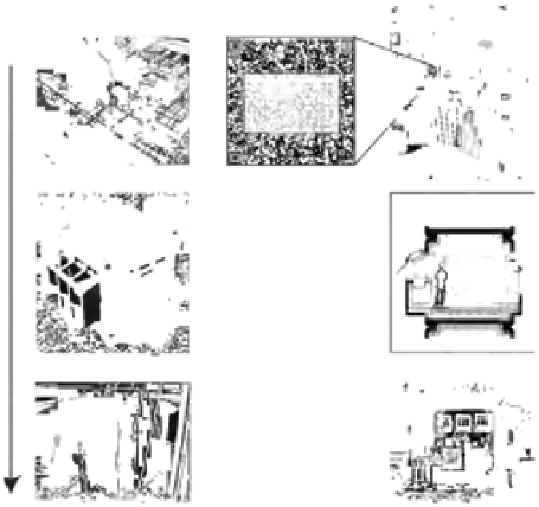Environmental Engineering Reference
In-Depth Information
Concept to reality
1/20˝
Community
interactive
QR code
1/4˝
Scaled section
Behaviorally
significant
Real
Peer to peer
crowd sourcing
FIGURE 31.21
Diagram at three scales of user participation and brain functioning from gaming to model to actual scale
prototype.
For a while I thought I had to be careful simply asking big questions but as I re-
entered my university setting that fall and looked at options for my final year, the issue
of relevance stuck in my head. My previous mindset would have preempted me from
landing the position with working on that new town with McHarg a year and a half
later. I also realized that even if our specific New Orleans project never happened it still
would have been a key moment of understanding what ecological design could accom-
plish in such a key position in our country, a site that possessed both great potential
and great risk.
What enabled me to be hired in such a prestigious position with Wallace, McHarg,
Roberts and Todd, arguably the most reknown ecological planning and design firm in the
country at the time, grew out of my ambition to complete two masters degrees simultane-
ously. Architecture studio projects were exciting enough at Penn but I remember hearing
that a Professor Ian McHarg was not averse to trying the impossible. As a bright-eyed,
eager student this piqued my interest, so I decided to join a studio well beyond my capa-
bilities in the regional planning department.
The class objective was to save the Hackensack Meadows in New Jersey. The project,
paid for by the state of New Jersey, was to sustain this gigantic salt marsh and preserve it
as McHarg would say as an “Urban Oasis” in the midst of the largest metropolitan area
in the world at the time. The studio quickly realized a major problem: The McHargian
Method was not meant for an already transformed environment. As a result, we were only
able to save 2 acres out of the 18,000 acre site. The natural wetland had been destroyed by
development and it was not feasible to tear out Interstate 95 that connected New York to all
points west in order to reinstate a natural drainage pattern to save the wetland.


Search WWH ::

Custom Search